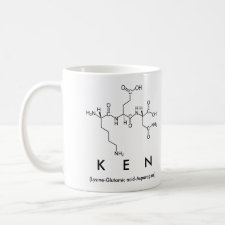
Authors: Liu MM, Pi JY, Wang XJ, Huang R, Du YM, Yu XY, Tan WF, Liu F, Shea KJ
Article Title: A sol-gel derived pH-responsive bovine serum albumin molecularly imprinted poly(ionic liquids) on the surface of multiwall carbon nanotubes.
Publication date: 2016
Journal: Analytica Chimica Acta
Volume: 932
Page numbers: 29-40.
DOI: 10.1016/j.aca.2016.05.020
Alternative URL: http://www.sciencedirect.com/science/article/pii/S000326701630650X
Abstract: A pH-responsive surface molecularly imprinted poly(ionic liquids) (MIPILs) was prepared on the surface of multiwall carbon nanotubes (MWCNTs) by a sol-gel technique. The material was synthesized using a 3-aminopropyl triethoxysilane modified multiwall carbon nanotube (MWCNT-APTES) as the substrate, bovine serum albumin (BSA) as the template molecule, an alkoxy-functionalized IL 1-(3-trimethoxysilyl propyl)-3-methyl imidazolium chloride ([TMSPMIM]Cl) as both the functional monomer and the sol-gel catalyst, and tetraethoxysilane (TEOS) as the crosslinking agent. The molecular interaction between BSA and [TMSPMIM]Cl was quantitatively evaluated by UV-vis spectroscopy prior to polymerization so as to identify an optimal template/monomer ratio and the most suitable pH value for the preparation of the MWCNTs@BSA-MIPILs. This strategy was found to be effective to overcome the problems of trial-and-error protocol in molecular imprinting. The optimum synthesis conditions were as follows: template/monomer ratio 7:20, crosslinking agent content 2.0-2.5 mL, temperature 4 °C and pH 8.9 Tris-HCl buffer. The influence of incubation pH on adsorption was also studied. The result showed that the imprinting effect and selectivity improved significantly with increasing incubation pH from 7.7 to 9.9. This is mainly because the non-specific binding from electrostatic and hydrogen bonding interactions decreased greatly with the increase of pH value, which made the specific binding affinity from shape selectivity strengthened instead. The polymers synthesized under the optimal conditions were then characterized by BET surface area measurement, FTIR, thermogravimetric analysis (TGA) and scanning electron microscopy (SEM). The adsorption capacity, imprinting effect, selective recognition and reusability were also evaluated. The as-prepared MWCNTs@BSA-MIPILs were also found to have a number of advantages including high surface area (134.2 m2 g-1), high adsorption capacity (55.52 mg g-1), excellent imprinting effect (imprinting factor of up to 5.84), strong selectivity (selectivity factor of 2.61 and 5.63 for human serum albumin and bovine hemoglobin, respectively), and good reusability
Template and target information: protein, bovine serum albumin, BSA
Author keywords: surface molecular imprinting, Multiwall carbon nanotubes, Ionic Liquids, sol-gel technique, Bovine serum albumin, pH-responsive



Join the Society for Molecular Imprinting

New items RSS feed
Sign-up for e-mail updates:
Choose between receiving an occasional newsletter or more frequent e-mail alerts.
Click here to go to the sign-up page.
Is your name elemental or peptidic? Enter your name and find out by clicking either of the buttons below!
Other products you may like:
 MIPdatabase
MIPdatabase









